On March 16, 2021, Robert Aaron Long opened fire on businesses in the Atlanta area that employ a large number of Asians. Six of his eight murder victims were Asian women. Similar to Dylan Roof who murdered nine Black parishioners inside an African Methodist Episcopal church in South Carolina and Patrick Wood Crusius who murdered 23 people in Texas in the deadliest anti-Latino attack in recent history, prosecutors should consider hate crime charges for Long.
Yet, some people are actually buying that Long’s actions were solely over an alleged sex addiction. There are a ton of massage places in the Atlanta area. Why did he only target the ones operated by Asians? It is because he is racist and probably sexist; plain and simple. It should not take domestic terrorists writing white supremacist manifestos, like those of Roof and Crusius, in order for us to classify their behavior as hate crimes. It is not enough for people to only be convicted of murder. They should also be convicted of hate crimes or we will continue to see everyday, mundane acts of racism spill over into larger acts of domestic terrorism.
All three violent acts noted above were committed by young white men. They are not anomalies. At times, people use racism and the racialization of people as a way to act out their frustrations with the world. Roughly 75% of domestic terrorist acts are committed by right-wing extremists and 75% of them are committed by white nationalists and white supremacists. Domestic terrorism is so concerning that the Director of National Intelligence and the Department of Homeland Security have classified domestic violent extremism to be the biggest threat for mass violence in the United States. But in order for us to recognize these acts as hate crimes, we have to ensure that racist perspectives are not brushed aside as normal. We also have to change statutes.
Despite these sobering statistics linking white nationalists and white supremacists with domestic terrorism, few people, particularly in law enforcement, are currently publicly linking Long’s actions to right-wing extremism when empirical research and history tells us this is exactly the first link that should be investigated. This is because America over-individualizes and normalizes domestic terror incidents, particularly when committed by white men. For instance, Sheriff Captain Jay Baker said Long had “a really bad day.” To ascribe these murders to a “bad day” is to normalize them, and to trivialize the lives lost.
We know that people have bad days all the time. Most people experiencing bad days do not go on a shooting spree and target businesses where Asians work, Latinos shop, or Black people worship. These types of comments speak to the level of sympathy, compassion, and restraint shown to white supremacists. Long, Crusius, and Roof were apprehended peacefully, despite some of them being armed and leading police on a chase. Roof was even taken to Burger King on his way to the police station because he was hungry.
We have to be honest that some of the people who do the arresting and writing of the police reports empathize with white supremacists, to paraphrase Ida B. Wells. Captain Baker had anti-Asian sentiment spewed on his Facebook timeline. But, according to federal law and most state laws, these acts will probably be interpreted as free speech. However, speech should be reevaluated when the person making the statements has the ability to use a state-sanctioned deadly weapon or sign with a pen to change people’s lives.
In the United States, hate incidents are watered down by our country’s hate crime laws as well as how we process racist acts in our own minds. In this regard, not only does law enforcement have limited legal statutes by which to interpret these incidents, but some of them have limited capacity to actually process these incidents as hate crimes. Many people engage in self-justification by classifying racist actions as normative and justifiable. This is partly because these incidents have always been normative; to some people white supremacy ideology is normalized without them even realizing it. It is normalized at our work places, in our schools, on our televisions and social media timelines, and even at our dinner tables.
So, where do we draw the line between murder and hate crimes?
The state of Maryland grappled with this very issue. In 2017, Army Lt. Richard W. Collins III was murdered by Sean Urbanski on the campus of the University of Maryland. Collins was a graduating senior at Bowie State University (a Historically Black College or University), while Urbanksi was a University of Maryland student. Although Urbanksi was convicted of first-degree murder, the judge threw out the hate crime charge during the trial (despite Urbanski being linked to white supremacist groups on social media and having racist memes on his phone), stating that it was unclear if Urbanski’s actions were solely based on anti-Black bias or because of his intoxication. Well, it can be both. Accordingly, Long may have a sex addiction, but he seems to embody anti-Asian bias as well.
Following the conviction of Urbanksi in 2020, the Prince George’s County prosecutor’s office, the Collins family, and the Lt. Collins Foundation led the charge to strengthen the hate crime statute in the state of Maryland. It resulted in the Lt. Collins Hate Crime Law. This legislation reads that a person who commits an act partly due to race or another protected group will be considered as enacting a hate crime. The previous legislation read that the act had to be completely motivated by a social identity protected under the Civil Rights Act. Under the Lt. Collins Hate Crime law, Long’s actions can be considered a hate crime without absolving his addiction, which could be interpreted as racism intertwined with misogyny that is often directed at Asian women.
Altogether, the United States’ approach to domestic terrorism and hate crimes is harming American democracy and infringing on freedom. Maryland is an example of how communities can aim to move forward following a hate crime. The University of Maryland and Bowie State University formed the Collins Social Justice Alliance to forge better race relations and address systemic racism. On the heels of a historic voter turnout in the state of Georgia that merged Black, Latino, and Asian coalitions, the Atlanta area will have to undergo the same healing process.
The Atlanta area murders boiled over from unchecked anti-Asian sentiment, signs, and crimes across the country and the world. Murders like that of Lt. Collins boiled over from all the times that white nationalists formed social media groups, racist memes were texted, and statements about anti-Black violence were unaddressed. The Capitol insurgency boiled over from unaddressed state capital sieges and unchecked false statements. These incidents ended with Asian Americans afraid to go to work and walk down the street, Black students afraid to walk across a college campus or go for a jog, and religious people afraid to go to houses of worship.
If we want to truly reach our democratic ideals, racist thoughts, behaviors, and incidents must be interpreted in our minds and by law as far from mundane and normative as possible, and instead, processed as the destructive hate crimes and domestic terror they have always been.
The Brookings Institution is committed to quality, independence, and impact.
We are supported by a diverse array of funders. In line with our values and policies, each Brookings publication represents the sole views of its author(s).
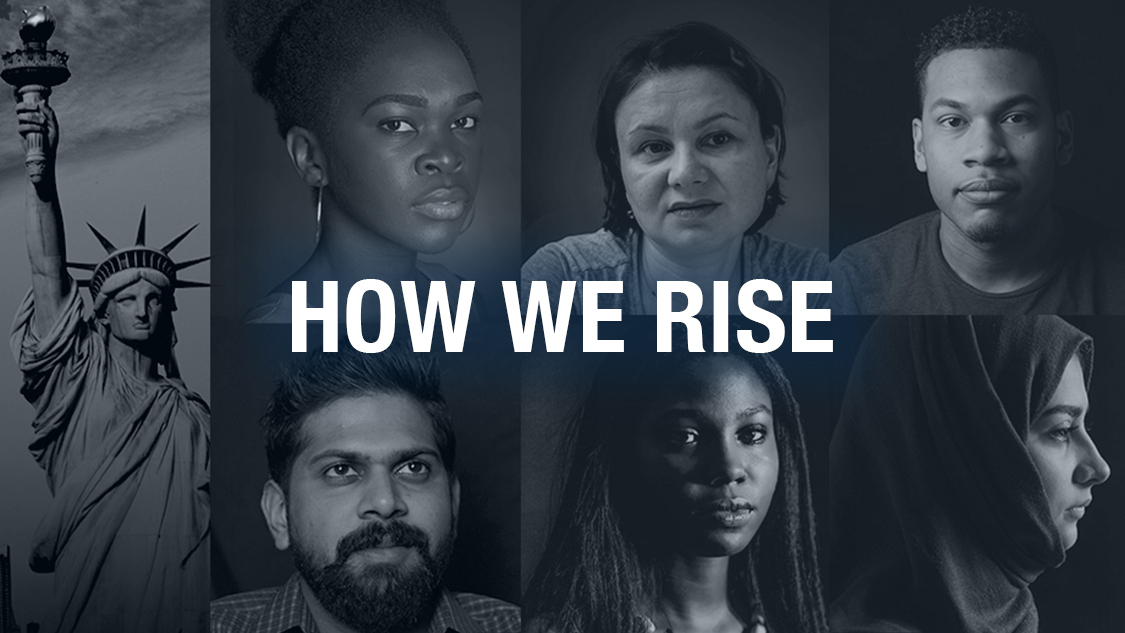

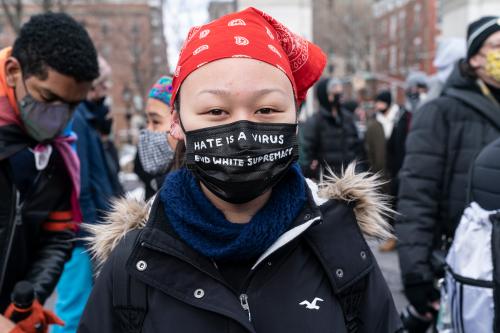
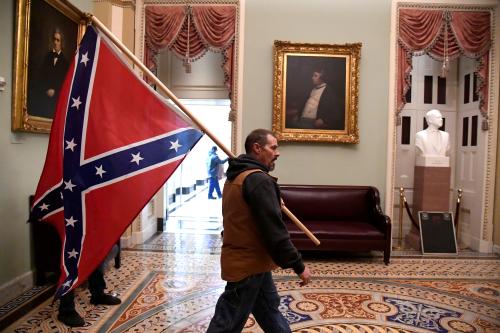

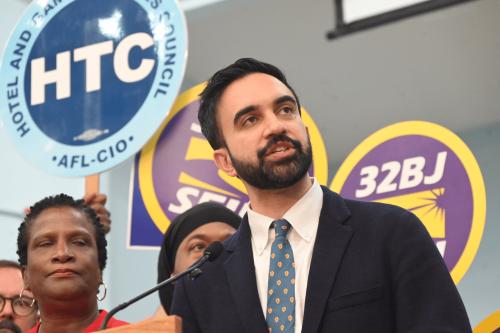

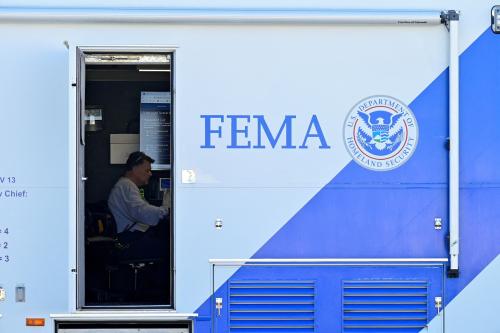
Commentary
Why is it so hard for America to designate domestic terrorism and hate crimes?
March 18, 2021